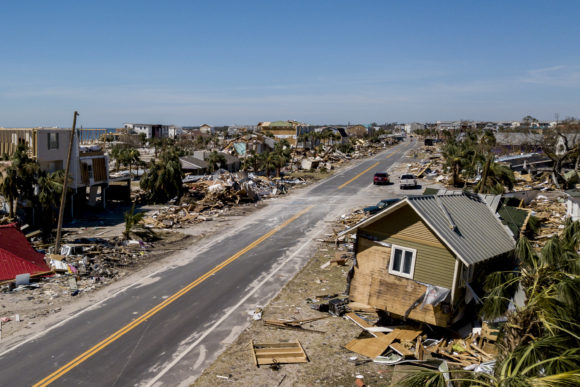BlogThursday, October 10 2019
Since Hurricane Michael made landfall Oct. 10, 2018, federal assistance for recovery in the 18 affected counties is nearly $1.9 billion, including FEMA grants, National Flood Insurance Program payments and U.S. Small Business Administration loans, according to a statement from FEMA. Included in that figure is an estimated $224.1 million in claims paid to 4,270 NFIP policyholders, FEMA said. One year has elapsed since Hurricane Michael pummeled the Florida Panhandle, packing 155 mph winds, torrential rain and high tides and displacing thousands of families amid structural damage that will cost billions to repair. Twenty-five federal and 29 state agencies responded to one of the country’s most powerful storms. In addition to state and federal agencies, the local governments, community leaders, voluntary and faith-based organizations and private sector partners contributed to hurricane recovery efforts. FEMA said federal assistance for Hurricane Michael, as of Sept. 30, 2019, includes:
In addition, FEMA’s Interagency Recovery Coordination Group continues to work with the state and the designated counties and their communities to help identify and coordinate financial and other resources to meet needs beyond what FEMA, the state and other programs can cover. 
Seven long-term recovery groups have been formed across the Panhandle to address unmet needs of survivors in their communities. “As the costs of disasters continue to rise, governments and residents must find ways to reduce hazard risks to our communities,” FEMA said in a statement. Under the presidential declaration for Hurricane Michael, all areas within the State of Florida are eligible for assistance under the Hazard Mitigation Grant Program (HMGP). HMGP funding helps communities eliminate or reduce future disaster-related damage. In general, individuals may not apply directly to FEMA for HMGP funding, but may be sponsored through a local government, tribe or private nonprofit. All applications from local governments or others are submitted to the state, which receives and distributes HMGP funds from FEMA. |
Personal Service at Internet Prices!
 |
© Olson & DiNunzio Insurance Agency, Inc., 2008
2536 Northbrooke Plaza Drive; Naples, FL 34119
Doing Business in the State of Florida
P: 239-596-6226; F: 239-596-1620; E: info@olsondinunzio.com
Featuring the cities of Naples, Bonita Springs, Marco Island and Estero Florida. Providing them the highest quality insurance and unbeatable rates.



